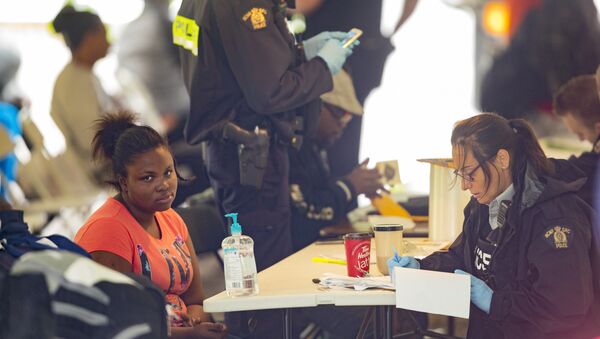Canadian authorities said that asylum requests have increased threefold since the middle of July. Most of the asylum-seekers are Haitians, while some of them are of Yemeni and Somali descent.
According to the head of the Canadian union representing customs and immigration workers, up to 700 migrants cross the border weekly at the Lacolle crossing point.
"The pressure on the system is quite high," George told Radio Sputnik. "The question arises how border control forces can deal with this surge. It has been tough on them, many of them feel that they are working 24-25 days per month overtime, even though resources have been sort of redistributed," she said.
"On the whole Canada feels that it can't handle that pressure," the expert added.
"They were told clearly that ‘once you cross the border to Canada you will become illegal migrants because it's illegal to cross' but nothing deterred them," George said, adding that the number of US migrants to Canada started drastically increasing in winter 2017.
"People actually walked in deep snow, they swam through rivers, many of them literally had huge help issues [like serious hands and legs' injuries]. So they took that risk simply because they felt that Canada would be a safer place to be in," she stated.
Most of the migrants are Haitian nationals who relocate to Canada as their temporary protected status in the United States expires. Haitians have received a special status after an earthquake ravaged the Caribbean country in 2010.



